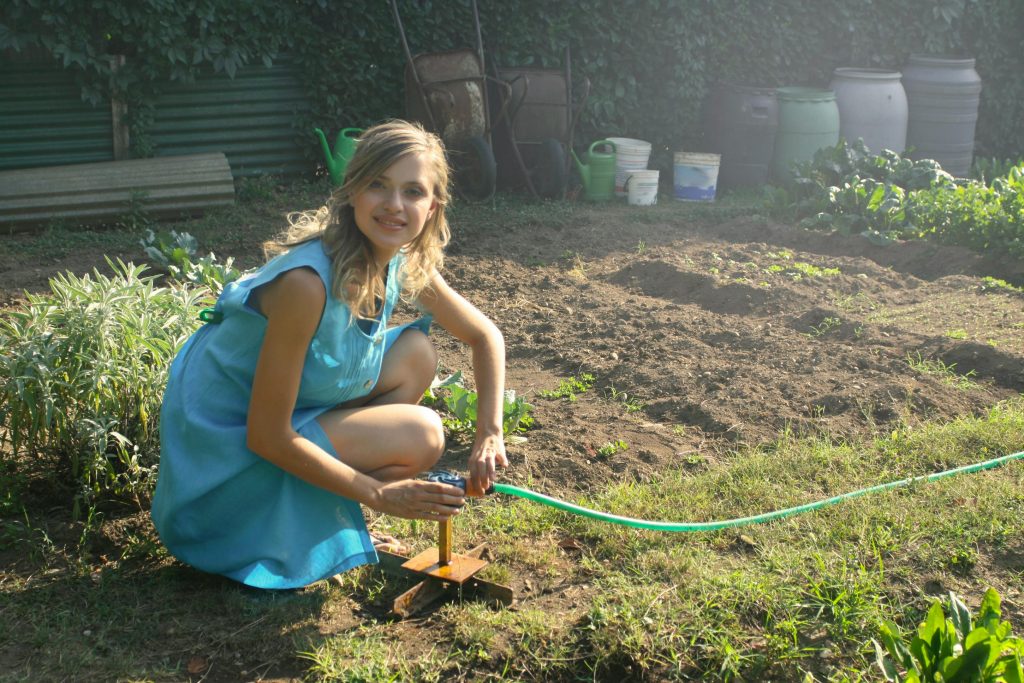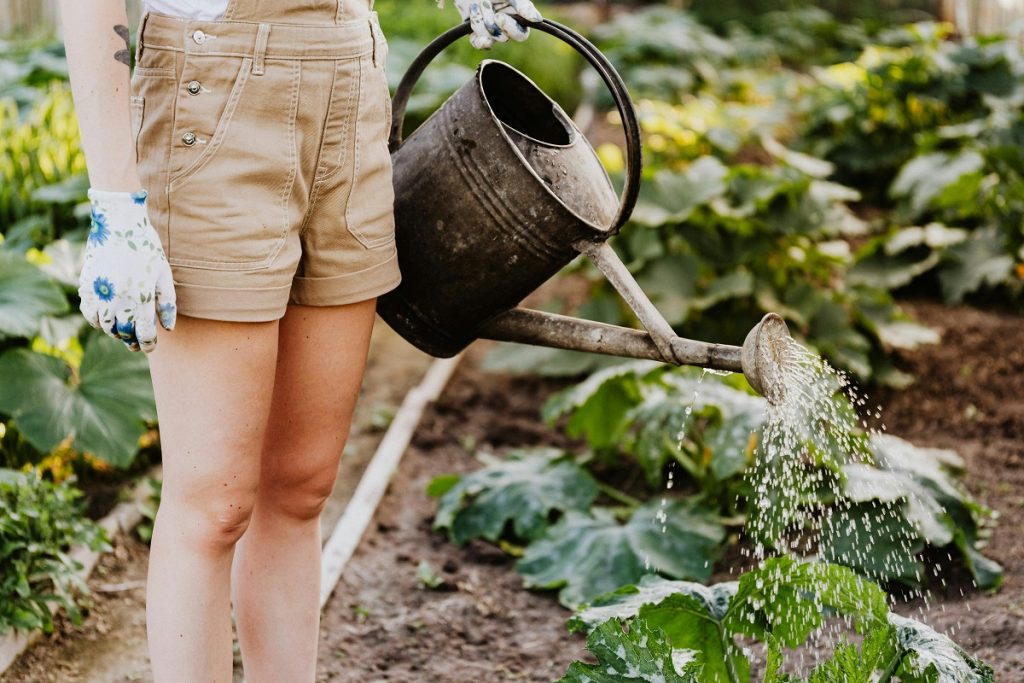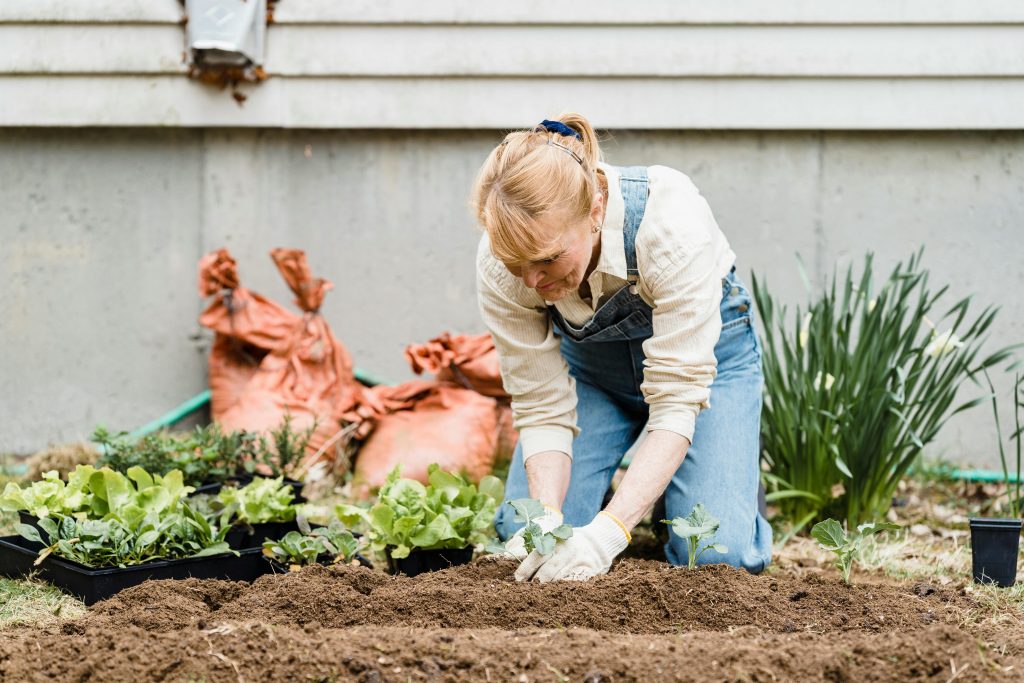
- Creating a verdant and vibrant backyard oasis involves understanding the crucial balance of efficient watering.
- Understanding your climate and plants’ needs before setting a watering schedule.
- Water conservation can be achieved through drip irrigation systems and rainwater harvesting techniques.
- Efficient watering also involves strategic plant selection and placement, including choosing drought-tolerant plants and utilizing companion planting.
A verdant and vibrant backyard oasis is the dream of many homeowners. Seeing a well-manicured lawn, lush foliage, and blossoming flowers can elevate the spirit and serve as a sanctuary that merges with nature.
But here’s the plot twist: turning this dream into reality requires more than planting suitable greenery. It involves understanding the crucial balance of efficient watering that guarantees health and vigor without wasting precious resources. In this comprehensive guide, we will explore the essential strategies for creating and maintaining a lush and environmentally sound garden.
The Art of Watering: Science Meets Sustainability
The foundation of proper irrigation lies at the heart of a thriving backyard oasis. Water, the lifeblood of all greenery, can be nurturing and wasteful if not managed precisely. Efficient irrigation techniques are pivotal to maintaining a bountiful garden and treading lightly on the planet’s resources and your wallet.
Understanding Watering Needs
Before setting your watering schedule in stone, it’s vital to understand what the elements and your plants are telling you. Your climate – typical humidity, average temperatures, and the varying seasons – holds critical clues to how and when to water. Different plants necessitate different watering frequency and depth, encompassing an array of needs that can be pretty diverse.
A good garden watering system, for instance, should cater to the requirements of your plants based on their location, soil type, and water retention capacity. Furthermore, the state of your garden – if it’s newly planted or in a drought-prone area – also plays a significant role.
Factors That Influence Watering Needs
Climate isn’t the only influencer. Soil type, whether sandy and fast-draining or clay and water-retentive, radically alters when you should water and how much. And your star players, your plant species, come with their water consumption habits. They all have specific requirements, from the majestic oak to the humble daisy.
Water Conservation Methods

In the current era of environmental consciousness, water conservation has transcended simply being a sound practice; it’s a decisive mark of a responsible gardener. We’ll delve into advanced techniques that conserve water and optimize its usage for maximum benefit.
Drip Irrigation Systems: Precision in Every Drop
Revolutionary in its precision, drip irrigation systems deliver water directly to the roots with minimal loss due to evaporation or runoff. We’ll unravel the intricacies of designing and deploying a drip system, discussing the benefits of customizing it to your unique garden layout.
Rainwater Harvesting: Nature’s Bounty at Your Fingertips
Why wait for the skies to open when you can capture its offerings in advance? Rainwater harvesting is a sustainable practice that saves on your utility bill and ensures your garden isn’t deprived during dry spells.
In-Depth Techniques for an Abundant Garden
Efficient watering is about more than just turning the tap at the right time; it involves a series of strategic actions that work synergistically to nurture your backyard sanctuary.
Watering Deeply and Infrequently
Shallow watering can lead to shallow roots, leaving plants vulnerable to stress during droughts. We’ll investigate the benefits of watering less often but more profoundly, including using a garden watering system, which ensures moisture reaches plants’ deep roots.
- Mulching: Nature’s Moisture Lock – Mulch isn’t just a visual enhancement; it’s a moisture retention system. We’ll explore the different types of mulch and the best practices for applying them to shield your soil from the sun’s scorching effect and minimize evaporation.
- Sprinkler Systems Optimization: The Spritz with Finesse – Conventional sprinkler systems are workhorses of garden hydration. But they need not be the water-wasting behemoths they are often perceived as. Learn how to adjust your sprinkler heads for perfect coverage and minimize overspray.
Plant Selection and Placement: A Strategic Gardener’s Toolkit
Plant selection and arrangement are two of the most influential factors in your watering regimen. Choose wisely, and you’ll reduce the demand for water without sacrificing beauty.
Choosing Drought-Tolerant Plants: Thriving in Tough Times
When the going gets dry, the drought-tolerant plants keep on going. We explore species that are resilient in the face of water scarcity, ideal for creating a low-maintenance yet picturesque landscape.
Companion Planting: Friends with Benefits

Companion planting is an age-old technique that fosters mutual support among neighboring plants, including moisture regulation. Discover which plants make the best allies and how to group them for a harmonious garden balance.
Sustaining the Oasis
The gardener’s conundrum lies in the juxtaposition of a lush garden and the inherent fragility of our planet’s water resources. Yet, as this guide has illustrated, the solution is within reach. By integrating the principles of efficient irrigation, you can relish in the bounty of a thriving backyard utopia while upholding sustainable practices that respect nature’s elegant equilibrium. It is a journey that embodies both practicality and poetry, where the simple act of watering orchestrates life in all its complexity.